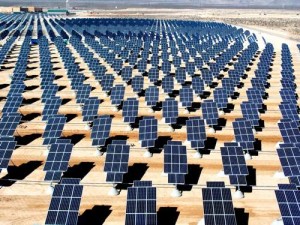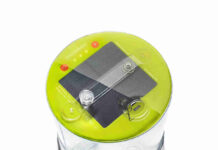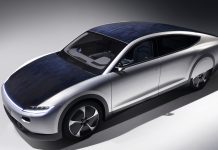 Important corporations are very interested to go green and create a conducive environment for clean and green energy.
Important corporations are very interested to go green and create a conducive environment for clean and green energy.
Walmart is also taking appreciative steps in the field of alternative energy and from 2007 entered into a partnership with Environmental Defense Fund (EDF) to provide a thrust to the photovoltaic technologies. They aimed for taking it out from labs to the real world a technique related with thin-film solar.
A first step is to installing the solar panels in its stores in southern California, Hawaii and Puerto Rico. With this step Walmart is moving toward its pledge of going 100% green in future. Its thin-film solar panels will be procured from Tempe, Arizona-based First Solar and MiaSolé. First Solar utilizes cadmium telluride and MiaSolé, and makes use of copper, indium, gallium and selenide (CIGS) for their modules. Both of these companies offer low cost solar panels and provide an alternative to costly silicon based panels.
Why were chosen California and Arizona for the new Walmart solar installations? Because the simple fact that these two states receive ample sunshine and the economic fact is that these two states provide financial incentives thus giving necessary impetus for the expansion of solar drive. Walmart also aims to portray itself as an organization that cares about the world its customers live in. It is not merely the price that attracts consumers towards brands and organizations it is also the way they conduct business and show sensitivity towards burning issues like the environment and natural disasters. So aside from cost savings and upfront incentives Walmart also feels enthusiastic about the environmental impact its new decisions are going to make.
Alternative energy project’s successes are calculated by two mainly yardsticks. First, some significant amount of energy is converted into clean and green energy and second, how much greenhouse gas emissions are reduced. Thin-Film solar cells’ performance is not disappointed on these two fronts. They cost around the same or slightly less than the electricity generated from the conventional sources. Installing thin-film solar panels also give returns like any other infrastructure project.
After the installation of the thin-film solar cells in the proposed locations of Walmart they are expected to yield more than 22.5 million kilowatt hours of energy per year. This will meet up the 20 to 30% needs of the each outlet. If we want to know in terms of reduction in greenhouse gases, it would be equal to more than 11,650 metric tons of GHG. It means we are taking more than 3,000 cars off the road each year.
Kim Saylors Laster, who is the Walmart vice president of energy, says, “By leveraging our global scale to become a more efficient company, we are able to lower our expenses and help develop markets for new technologies. Developing and incorporating new renewable energy sources, like thin film, reduces energy price risk and aligns very well with our commitment to solving business challenges through technology.”
Looking at the 8,350 outlets of Wallmart, their going green move is still in infancy but is a beginning. A thousand steps start with the first one, they already did it.




Maybe you’re right, but I still have my own opinion about this.